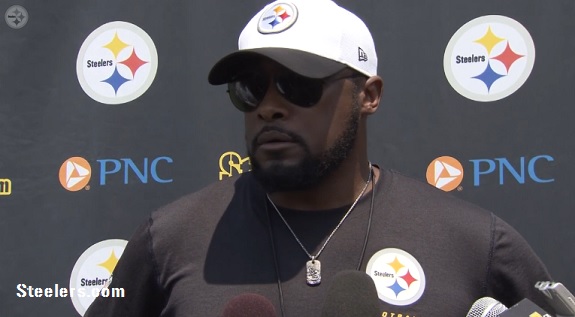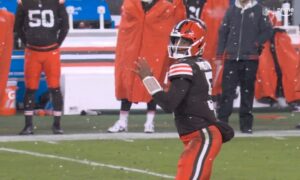Much has been talked about over the course of this offseason regarding the NFL’s rule change to move the extra point try back from the two-yard line to the 15-yard line, ostensibly encouraging more teams to attempt two-point conversions in addition to making the extra point more challenging in general.
The Pittsburgh Steelers appeared to be among the teams to embrace the new challenge that the change has made with regard to decision-making, with Mike Tomlin having his team drill the two-yard offense during OTAs, for example.
Ben Roethlisberger, meanwhile, talked about the possibility of the Steelers attempting more two-point conversions, suggesting that they might have to have a considerably higher number of two-point plays in their arsenal. Pittsburgh has been the most successful team in converting them in recent years.
Then we had Cameron Heyward, a defensive end, talk about the possibility of facing more two-point conversions from the defensive perspective. From his vantage point, it would be a good thing for offenses to attempt more, because he wants his defense to be given the chance to stop them.
It was in light of these comments, particularly the above, that I found Tomlin’s post-practice comment at the end of his press briefing, asked for his thoughts about potentially using more two-point plays.
Asked if he knows which we had was leaning, Tomlin said, “I don’t at this point. My mentality regarding that largely depends on the capability of our men, offensively and defensively”.
Obviously, the Steelers’ capability of defending opponents’ two-point attempts has no bearing on the offense’s capability of converting them. But it’s interesting to think of the two sides as a continuum, which is what Tomlin is doing, indicated by his comments.
Whether or not a team has a good success rate of defending two-point conversions will weigh heavily into the consideration for whether they should be attempted. But by going for two-point tries yourself, and converting them, you also naturally encourage your opponent to go for them as well.
Thus, the advantage of a successful two-point team is two-fold: converting them and defending them. If you’re a team that is good at defending them, then it would be an even greater advantage to attempt them on offense.
If, however, your team struggles to defend two-point tries, then is significantly erodes the advantage gained from having a strong offensive unit to convert them, because it means that your opponent stands a good chance of matching your efforts while you take the greater risk of attempting them in the first place.
As much as Heyward would likely to see every opponent go for two every time, the Steelers defense needs to show that it has the ability to stop their opponents in this area of the field if Tomlin and the offense has any plans of taking advantage of their past success in converting them on the offensive side. Otherwise you might as well kick the extra point rather than take the added risk, knowing that your opponent is likely to be able to reciprocate.








